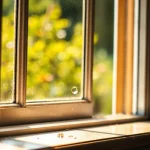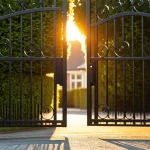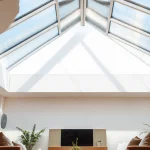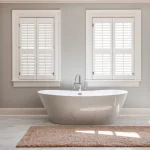Understanding the Importance of Wildlife Sanctuaries
Wildlife sanctuaries play a crucial role in protecting and preserving the natural environment. These areas serve as safe havens for flora and fauna, offering them the necessary habitat to thrive away from human interference. The ecological benefits of establishing a wildlife sanctuary extend beyond protection, as they contribute significantly to the biodiversity of the region. Sanctuaries often act as breeding grounds, supporting various species and helping maintain ecological balance.
In urban areas, wildlife gardens are becoming increasingly important. They offer a space where local wildlife can find shelter and food, aiding in the preservation of species that might otherwise struggle to survive in densely populated environments. These gardens are not just aesthetic additions; they contribute to the local ecosystem by supporting pollinators like bees and butterflies, which are essential for plant pollination.
In parallel : Revitalize your suburban oasis: discover eco-conscious greywater irrigation strategies for uk gardens
Even small gardens can have a major impact. By planting native species, installing water features, or simply leaving sections of the garden untouched, individuals can provide critical support to local ecosystems. Such small-scale efforts cumulatively bolster the natural environment, demonstrating how personal actions can indeed aid in conservation efforts.
Understanding the Importance of Wildlife Sanctuaries
Wildlife sanctuaries are instrumental in maintaining ecological health by providing safe habitats for a wide range of species. These protected areas allow for the natural processes of breeding, feeding, and migration without human interference. This support is crucial for sustaining the biodiversity of regions, offering species the opportunity to flourish in stable environments. Complementing these sanctuaries, wildlife gardens in urban settings offer additional refuge.
Also to see : Discover the perfect potting mix for vibrant indoor orchids: the definitive uk guide
In cities, wildlife gardens are particularly valuable as they help maintain biodiversity amidst urbanisation. By planting native flora, homeowners can create miniature sanctuaries that support local wildlife, promoting ecosystem integrity even in densely populated areas. These gardens not only enhance aesthetic appeal but serve as crucial habitats for pollinators like bees and butterflies.
Even small spaces can contribute significantly to conservation efforts. Homeowners can bolster local ecosystems by choosing to plant native species, install water features, or leave parts of their gardens wild. Such actions can have a substantial impact, collectively enriching the natural environment and highlighting the effect of individual contributions to broader conservation initiatives.
Planning Your Wildlife Pond
Creating a wildlife-friendly pond is a rewarding effort that supports local biodiversity and enriches your garden’s ecosystem. When planning your pond, it’s vital to consider key factors to ensure the best possible environment for local wildlife.
Key Considerations for Choosing the Right Location
The location of your pond is crucial. Look for an area in your garden that receives ample sunlight, as this promotes healthy plant growth and benefits a range of native species. However, be cautious of excessive sunlight, which can increase water temperatures and stimulate unwanted algal blooms. Adequate drainage is also essential to prevent water stagnation and maintain overall pond health. By carefully assessing these aspects, you provide an optimal habitat for wildlife to thrive.
Integrating your pond with existing features is another important factor. This can be achieved by designing a layout that enhances habitat connectivity, allowing wildlife to move freely and find both shelter and food resources. Incorporating native plants and natural elements like rocks or logs can further improve the pond’s ecosystem and encourage diverse species to visit. Thoughtful garden design not only supports local wildlife but also creates a serene and visually appealing space for you to enjoy.
Selecting Materials for Pond Construction
Eco-friendly options and thoughtful selection of pond materials are key to constructing a sustainable wildlife pond. When choosing a pond liner, consider options like EPDM and butyl, which are flexible, durable, and have less environmental impact compared to PVC. Natural materials, such as rocks and stones, can enhance the pond’s ecosystem by providing shelter for amphibians and insects.
Incorporating sustainable alternatives during construction is equally important. Using reclaimed wood for edges or barriers not only reduces waste but also creates natural habitats. Additionally, consider eco-friendly filters or solar-powered pumps that minimize energy consumption and support a healthier water environment.
By prioritizing environmentally conscious choices, your pond construction can promote biodiversity while reducing ecological footprint. These materials not only offer practical benefits but also enrich the pond’s aesthetic, creating a harmonious garden setting that attracts a variety of wildlife.
Steps for Building Your Wildlife Pond
Constructing a wildlife pond in your garden not only enhances its beauty but also fosters local biodiversity. This guide provides insights into the main stages of creating a pond that benefits the ecosystem and supports various wildlife species.
Excavation Process
Begin by marking where you want your pond. Safety should be your top priority during excavation. Use tools like a spade or mini-digger, depending on the size of your pond. The shape and depth of the pond are crucial; a varied depth can accommodate different species. Ensure slopes are gentle, particularly on the sides, to enable creatures to enter and exit easily.
Installing the Pond Liner
Select a durable liner and lay it carefully. Start by smoothing the bottom of your excavated area to prevent punctures. Once laid out, secure the liner’s edges with rocks or soil. This prevents it from shifting and forms a base that helps maintain water levels.
Adding Water and Features
Filling your pond correctly matters. Ideally, use rainwater to support a healthy aquatic environment. Once the pond is filled, add features like rocks or logs around the edges. Including shallow areas and ledges helps attract a wider array of wildlife, offering them spaces for basking and shelter.
Landscaping Around Your Pond
Designing the area around your pond is pivotal in creating a vibrant wildlife habitat that attracts and nurtures various species. The use of native plants is crucial as these are best suited to the local environment, requiring less maintenance while supporting the area’s indigenous wildlife. Native plants act as essential shelter and food sources for a variety of creatures, including insects and birds, enriching your pond’s ecosystem.
When planning your pond landscaping, consider a diversity of plant heights and types to provide a layered habitat. This arrangement can offer the necessary cover and nesting sites for smaller creatures, enhancing your garden’s biodiversity. Additionally, integrating features like rocks or logs not only adds aesthetic appeal but also contributes to habitat connectivity by letting wildlife move seamlessly through the garden.
While manicuring the edges of your pond may tempt, allowing natural edges to develop brings substantial benefits. These unmaintained borders create microhabitats that are vital for moisture-loving species and help in soil stabilization. By embracing natural growth patterns, you encourage a more stable and self-sustaining environment for various plant and animal species.
Attracting Wildlife to Your Pond
Creating a wildlife-friendly pond is just the beginning; ensuring it becomes a buzzing hub of activity requires intentional efforts to attract native species. To foster a thriving environment, focus on building a habitat that welcomes a variety of creatures, from amphibians and birds to insects. The goal is a balanced ecosystem that promotes biodiversity.
One effective practice is designing shallow areas within your pond. These zones are crucial for various species as they provide spots for birds to bathe, frogs to spawn, and insects to lay eggs. The gentle gradient from shallow to deep also permits animals to enter and exit the water effortlessly, boosting species diversity.
Introducing native aquatic plants can further enrich the pond environment. Such plants offer shelter, food, and breeding grounds for various animals. Additionally, these plants naturally fit into the local ecosystem, requiring less maintenance compared to non-native species.
When considering fauna, it is important not to introduce fish hastily, as they might disturb the natural balance by preying on beneficial organisms like amphibian larvae. However, selecting a few small, compatible species can help control insect populations, preventing issues such as mosquitoes.
Creating a balanced ecosystem is vital for a sustainable pond environment. Invite helpful organisms such as snails and beneficial bacteria to break down organic matter, enhancing water quality. By carefully planning each element, your pond can become a welcoming sanctuary for local wildlife and a captivating feature in your garden.
Maintenance Tips for a Thriving Wildlife Pond
Ensuring your wildlife pond remains a healthy ecosystem requires consistent attention to pond maintenance. Regular upkeep not only helps maintain water quality but also supports the diverse wildlife that inhabits your pond. Here are some critical tips to keep your pond thriving.
Regular Maintenance Routines
To begin with, conducting regular checks on water levels and clarity is essential. This includes removing debris, such as fallen leaves or dead plants, to prevent the build-up of harmful algae and invasive species. Such routine actions ensure that the pond remains a viable habitat for native species.
Seasonal Considerations
Each season brings unique challenges and needs. During autumn, for instance, installing a net over the pond can reduce leaf accumulation, an action critical for maintaining water health. In winter, ensuring a section of the pond surface remains unfrozen allows oxygen exchange, supporting aquatic life through colder months.
Algae Management
Controlling algae growth is crucial for a balanced ecosystem. Opt for natural solutions like introducing beneficial organisms such as pond snails and plants that can naturally filter the water. This approach not only curtails excessive algae growth but supports a healthier environment for your pond’s wildlife.
By diligently following these maintenance tips, you’ll create a sustainable, wildlife-friendly pond that enhances both your garden’s beauty and local biodiversity.










